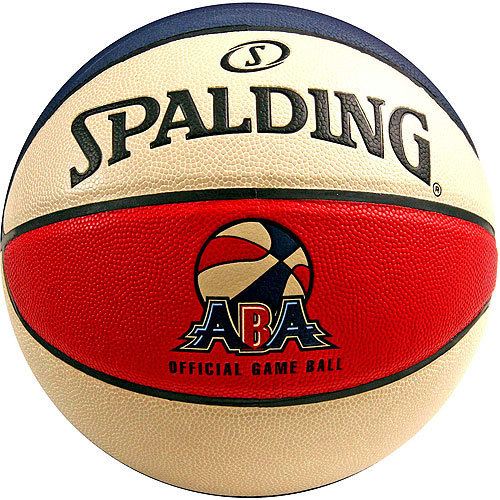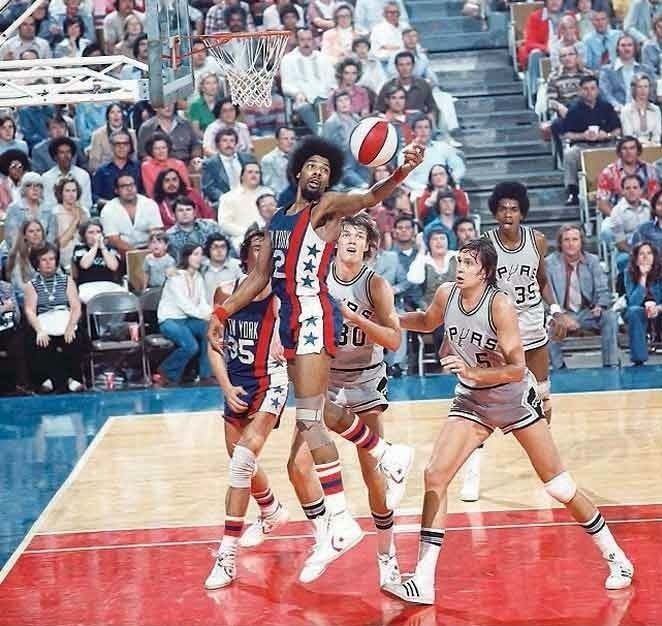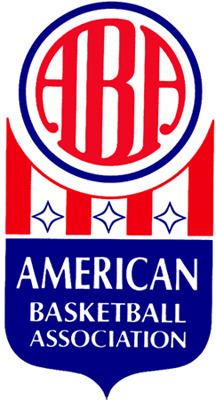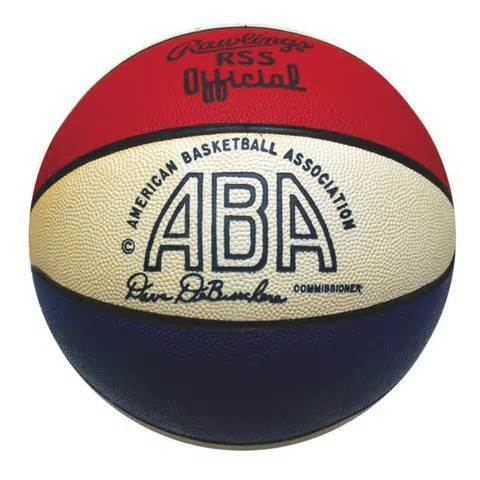Sport Basketball Ceased 1976 | Founded 1967 No. of teams 11 | |
 | ||
Country United States of America Continent FIBA Americas (Americas) | ||
Longshots the life times of the american basketball association
The original American Basketball Association (ABA) was a major-league professional basketball league founded in 1967. The ABA ceased to exist with the ABA–NBA merger in 1976.
Contents
- Longshots the life times of the american basketball association
- The history of the american basketball association part 2 6
- League history
- Commissioners
- Teams
- List of ABA championships
- Prominent players
- Succession
- References

The history of the american basketball association part 2 6
League history

The ABA was conceived at a time stretching from 1960 through the mid-1970s when numerous upstart leagues were challenging, with varying degrees of success, the established major professional sports leagues in the United States. Basketball was seen as particularly vulnerable to a challenge; its major league, the National Basketball Association, was the youngest of the Big Four major leagues, having only played 21 seasons to that point, and was still fending off contemporary challenging leagues (it had been less than five years since the American Basketball League (ABL) shut down). According to one of the owners of the Indiana Pacers, its goal was to force a merger with the more established league. Potential investors were told that they could get an ABA team for half of what it cost to get an NBA expansion team at the time. When the merger occurred, ABA officials said their investment would more than double.

The ABA distinguished itself from its older counterpart with a more wide-open, flashy style of offensive play, as well as differences in rules—a 30-second shot clock (as opposed to the NBA's 24-second clock, though the ABA did switch to the 24 second shot clock for the 1975–76 season) and use of a three-point field goal arc, pioneered in the earlier ABL. Also, the ABA used a colorful red, white and blue ball, instead of the NBA's traditional orange ball. The ABA also had several "regional" franchises, such as the Virginia Squires and Carolina Cougars, that played "home" games in several cities.
The ABA also went after four of the best referees in the NBA: Earl Strom, John Vanak, Norm Drucker and Joe Gushue, getting them to "jump" leagues by offering them far more in money and benefits. In Earl Strom's memoir Calling the Shots, Strom conveys both the heady sense of being courted by a rival league with money to burn—and also the depression that set in the next year when he began refereeing in the ABA, with less prominent players performing in inadequate arenas, in front of very small crowds. Nevertheless, the emergence of the ABA boosted the salaries of referees just as it did the salaries of players.
The freewheeling style of the ABA eventually caught on with fans, but the lack of a national television contract and protracted financial losses would spell doom for the ABA as an independent circuit. In 1976, its last year of existence, the ABA pioneered the now-popular slam dunk contest at its all-star game in Denver.
The league succeeded in forcing a merger with the NBA in the 1976 offseason. Four ABA teams were absorbed into the older league: the New York Nets, Denver Nuggets, Indiana Pacers, and San Antonio Spurs. Two other clubs, the Kentucky Colonels, and the Spirits of St. Louis, were disbanded upon the merger, with each getting a buyout: the Colonels received a one-time buyout that owner John Y. Brown, Jr. used to purchase the NBA's Buffalo Braves, while the Spirits owners negotiated a cut of the other ABA teams' television revenues in perpetuity. This deal netted the ownership group of the Spirits over $300M through nearly four decades due to a large increase in television revenues. In 2014, the NBA and the Spirits ownership agreed to phase out future payments in exchange for a one-time payment of $500M, making the total value for the deal over $800M. The seventh remaining team, the Virginia Squires, received nothing, as they had ceased operations shortly before the merger.
One of the more significant long-term contributions of the ABA to professional basketball was to tap into markets in the southeast that had been collegiate basketball hotbeds (including North Carolina, Virginia, and Kentucky). The NBA was focused on the urban areas of the Northeast, Midwest and West Coast. At the time, it showed no interest in placing a team south of Washington, D.C.
Commissioners
NBA great George Mikan was the first commissioner of the ABA, where he introduced both the 3-point line and the league's trademark red, white and blue basketball. Mikan resigned in 1969. Dave DeBusschere, one of the stars of the New York Knicks championship teams, moved from his job as Vice President and GM of the ABA's New York Nets in 1975 to become the last commissioner of the ABA and facilitate the ABA–NBA merger in 1976.
Teams
Of the original 11 teams, only the Kentucky Colonels and Indiana Pacers remained for all nine seasons without relocating, changing team names, or folding. However, the Denver Larks/Rockets/Nuggets, a team that had been assigned to Kansas City, Missouri, moved to Denver without playing a game in Kansas City due to the lack of a suitable arena. In addition to the four surviving ABA teams, eight current NBA markets have ABA heritage: Utah, Dallas, Houston, Miami, Minnesota, New Orleans, Memphis, and Charlotte all had an ABA team before the NBA arrived. The Louisville, Kentucky-Indiana market, former home of the ABA Kentucky Colonels, is considered a top contender for the next NBA expansion or relocation, and in fact the then Vancouver Grizzlies had Louisville as one of its four "finalists" for a new home before choosing Memphis in 2001. The Colonels led the ABA in attendance five of the ABA's nine seasons, with regular sellouts of 16,600+ fans at Louisville's Freedom Hall, since replaced by the 22,000-seat KFC Yum! Center.
List of ABA championships
With the ABA cut down to seven teams by the middle of its final season, the league abandoned divisional play.
Prominent players
For more information, see ABA All-Time Team.
Succession
In 1999, a new league calling itself the ABA 2000 was established. The new league uses a similar red, white and blue basketball as the old ABA, but unlike the original ABA, it does not feature players of the same caliber as the NBA, nor does it play games in major arenas nor on television as the original ABA did.
